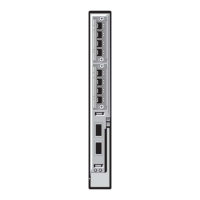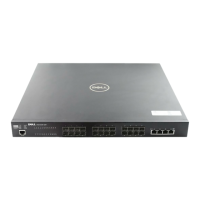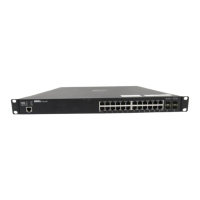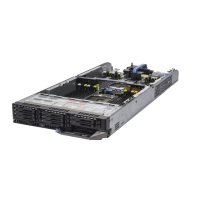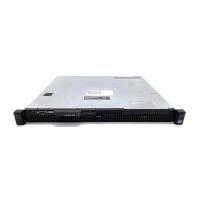Spanning Tree Protocol | 1061
In STP topology 2 (Figure 52-10 upper right), STP is enabled on device D on which a software bridge
application is started to connect to the network. Because the priority of the bridge in device D is lower than
the root bridge in Switch A, device D is elected as root, causing the link between Switches A and B to enter
a blocking state. Network traffic then begins to flow in the directions indicated by the BPDU arrows in the
topology. If the links between Switches C and A or Switches C and B cannot handle the increased traffic
flow, frames may be dropped.
In STP topology 3 (Figure 52-10 lower middle), if the root guard feature is enabled on the STP port on
Switch C that connects to device D, and device D sends a superior BPDU that would trigger the election of
device D as the new root bridge, the BPDU is ignored and the port on Switch C transitions from a
forwarding to a root-inconsistent state (shown by the green X icon). As a result, Switch A becomes the root
bridge.
All incoming and outgoing traffic is blocked on an STP port in a root-inconsistent state. After the timeout
period, the Switch C port automatically transitions to a forwarding state as soon as device D stops sending
BPDUs that advertise a lower priority.
If you enable a root guard on all STP ports on the links where the root bridge should not appear, you can
ensure a stable STP network topology and avoid bridging loops.
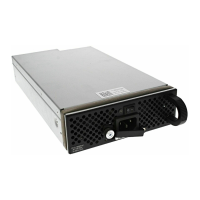
